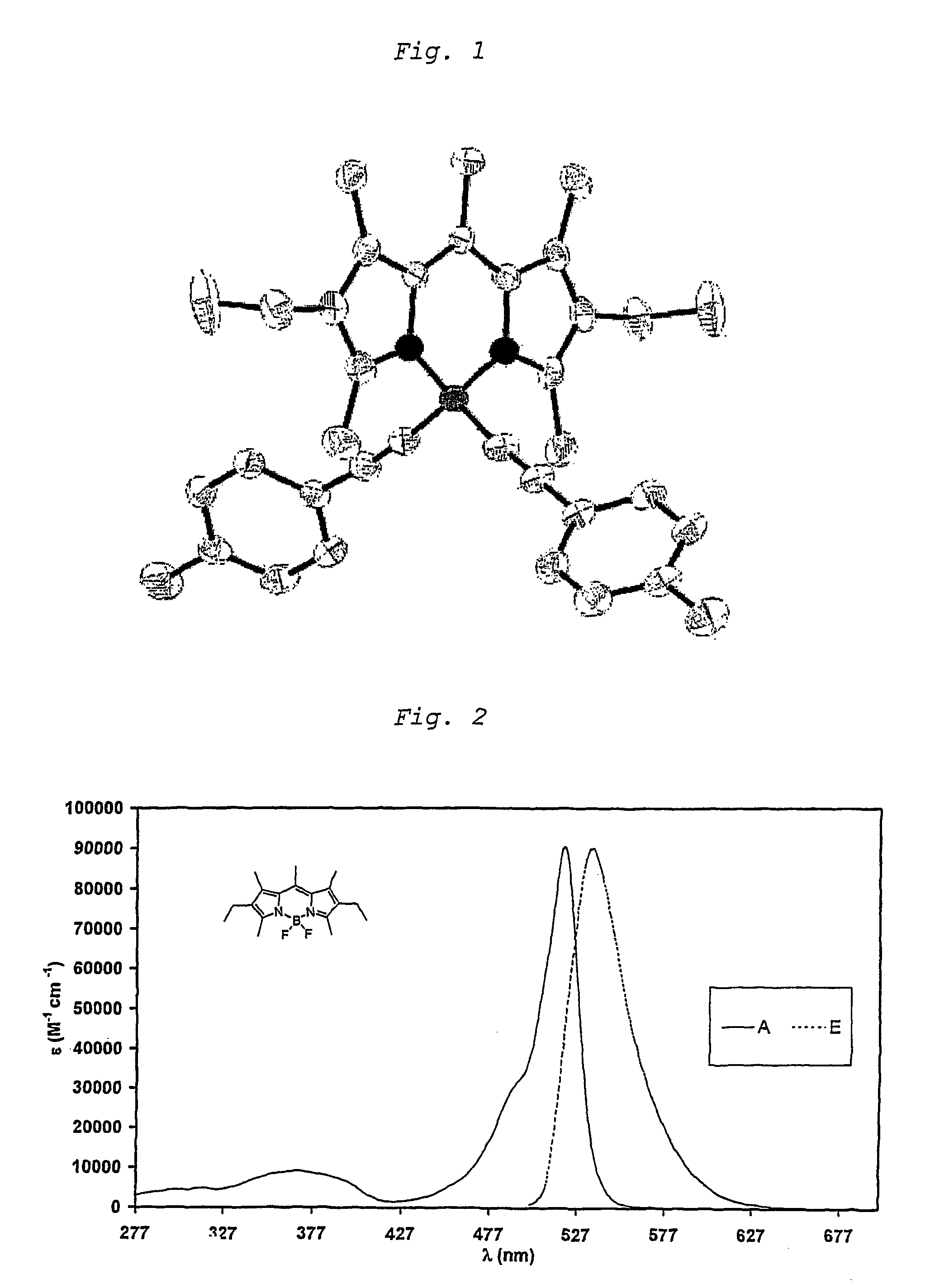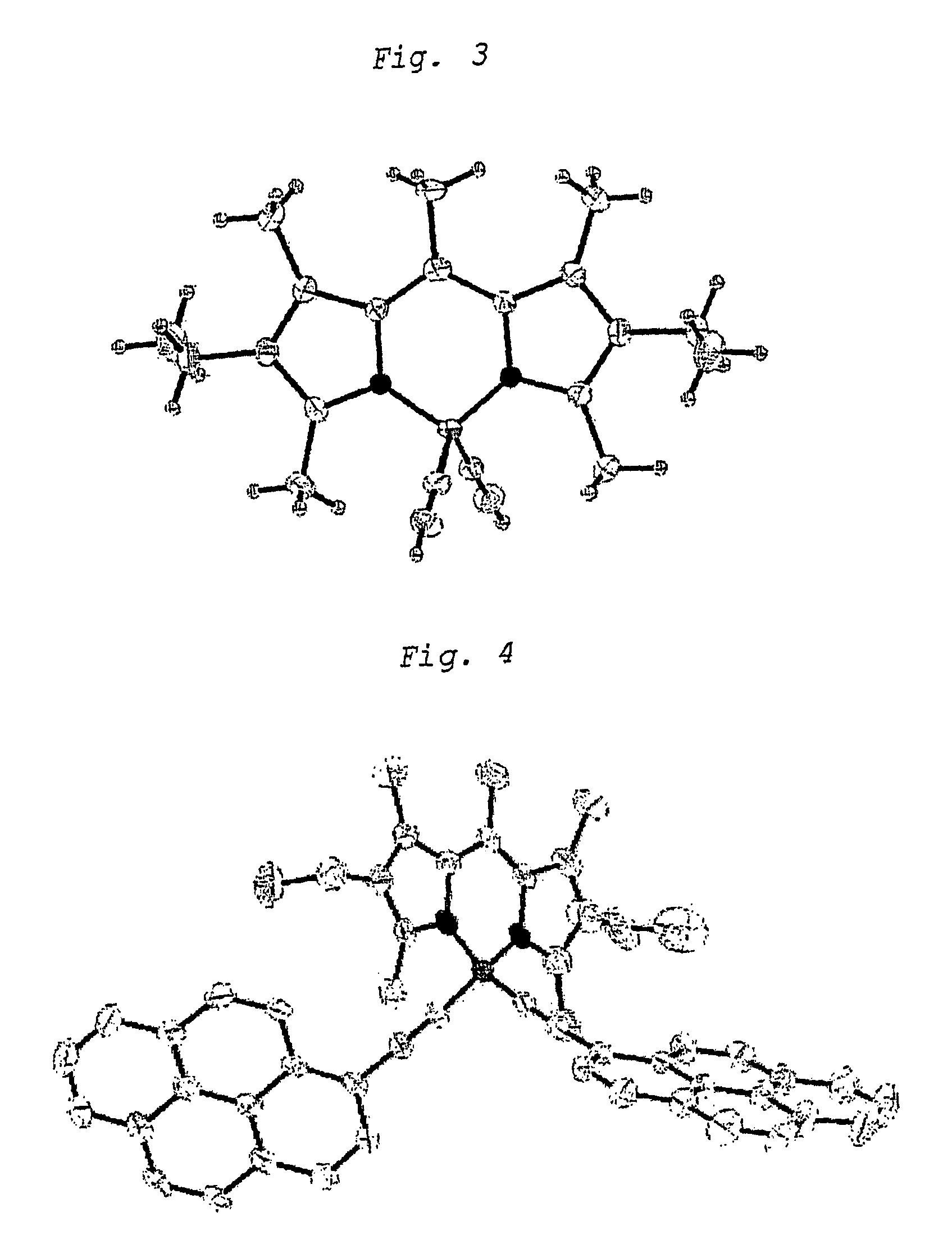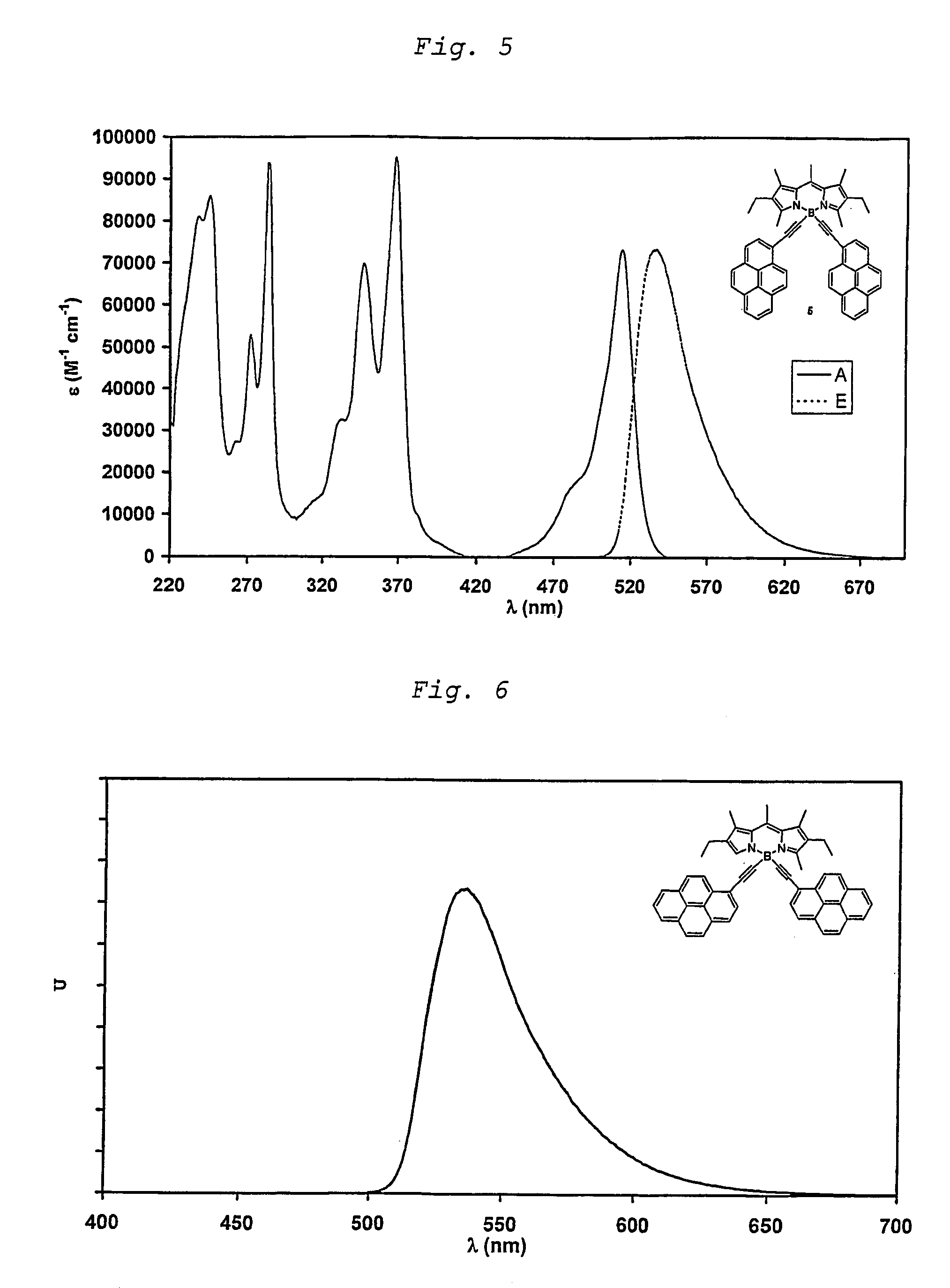Unsaturated dipyrromethene-boron borocarbons
a dipyrromethene-borocarbon and unsaturated technology, applied in the field of unsaturated dipyrromethene-borocarbons, can solve the problems of reducing the sensitivity of measurement and their sensitivity being not optimal, and achieve the effect of increasing the stokes shi
- Summary
- Abstract
- Description
- Claims
- Application Information
AI Technical Summary
Benefits of technology
Problems solved by technology
Method used
Image
Examples
example 1
Preparation of Compound 1
[0072]Compound 1 is prepared according to the following reaction pattern:
[0073]
[0074]The starting material 4,4-difluoro-1,3,5,7,8-pentamethyl-2,6-diethyl-4-bora-3a,4a-diaza-s-indacene, used as difluoroboradipyrromethene, was prepared according to the following mode of operation. 1 g (12.7 mmol) of acetyl chloride and 0.67 g of 3-ethyl-2,4-dimethyl-pyrrole were introduced into anhydrous dichloromethane, and stirred at ambient temperature for 1 day. Subsequently, anhydrous petroleum ether was added and the precipitate obtained after stirring overnight was filtered and then dissolved in toluene. 1.6 ml of triethylamine (1.6 ml) were subsequently added, then 2 ml of BF3Et2O (2 ml) were also added and the solution was heated to 80° C. for 15 minutes. After washing the organic phase (water 3×20 ml) and subjecting it to chromatography over silica gel (hexane / dichloromethane, 6:4), 0.5 g of compound 1′ were obtained.
[0075]n-butyllithium (1.55 M in hexane, 0.44 ml) w...
example 2
Preparation of Compound 2
[0084]Compound 2 is prepared according to the following reaction pattern:
[0085]
[0086]The difluoroboradipyrromethene 1′ used as a starting material is identical to that of Example 1.
[0087]n-butyllithium (1.34 M in n-hexane, 0.94 ml) was added under argon to trimethylsilylacetylene (0.174 ml, 1.26 mmol) in anhydrous THF (10 ml) at −78° C. The mixture was subsequently stirred for 1 hour at −78° C., then stirred for 30 minutes at ambient temperature. The pale yellow solution was transferred by cannula into a solution of difluoroboradipyrromethene (0.2 g, 0.33 mmol) in anhydrous THF (40 ml). The solution was subsequently stirred at ambient temperature for 15 minutes until the starting material had completely disappeared (monitored by TLC). Water was added (10 ml) and the solution was extracted with CH2Cl2 (50 ml). After evaporation, the organic residue was purified by chromatography on a column of alumina (CH2Cl2 / cyclohexane, 20:80), and was subsequently recrysta...
example 3
Preparation of Compound 3
[0092]Compound 3 was prepared according to the following reaction pattern 3.
[0093]
[0094]A sodium hydroxide solution (345 mg, 20 eq in 5 ml of methanol) was added to a solution of compound 2 (210 mg, 0.43 mmol) in 5 ml of CH2Cl2. The mixture was stirred for two days at ambient temperature until the starting material had completely disappeared. Water (10 ml) was subsequently added, and the solution was extracted with CH2Cl2 (50 ml). After evaporation, the organic material was purified by chromatography on a column of silica (CH2Cl2 / cyclohexane, 30:70), and was then recrystallised in CH2Cl2 / hexane. Pure compound 4 was obtained in the form of orange-coloured crystals (92 mg, 60%);
[0095]1H NMR (CDCl3 300 MHz): δ=2.72 (s, 6H), 2.61 (s, 3H), 2.43 (q, 4H, 3J=7.5 Hz), 2.34 (s, 6H), 2.17 (s, 2H), 1.06 (t, 6H, 3J=7.5 Hz); 13C {1H} NMR (CDCl3, 75 MHz): δ=151.9, 139.8, 134.8, 132.7, 130.2, 17.5, 17.4, 15.1, 14.8, 14.0;
[0096]11B NMR (CDCl3, 128 MHz); −11.05 (s); UV-Vis (C...
PUM
| Property | Measurement | Unit |
|---|---|---|
| wavelengths | aaaaa | aaaaa |
| wavelengths | aaaaa | aaaaa |
| temperature | aaaaa | aaaaa |
Abstract
Description
Claims
Application Information
 Login to View More
Login to View More - R&D
- Intellectual Property
- Life Sciences
- Materials
- Tech Scout
- Unparalleled Data Quality
- Higher Quality Content
- 60% Fewer Hallucinations
Browse by: Latest US Patents, China's latest patents, Technical Efficacy Thesaurus, Application Domain, Technology Topic, Popular Technical Reports.
© 2025 PatSnap. All rights reserved.Legal|Privacy policy|Modern Slavery Act Transparency Statement|Sitemap|About US| Contact US: help@patsnap.com



